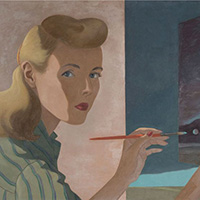
The Art Newspaper | November 7, 2018
Cubism. Futurism. Constructivism. Dadaism. Surrealism. Amid the maelstrom of artistic “isms” that swirled in the first decades of the 20th century, an obscure Hungarian poet saw a clear and unstoppable logic. Charles Sirató had begun composing “planar” poems in the 1920s that freed words from their lines and gave them pictorial form. As an émigré in Paris, he felt the shock of Modern art: paintings with depth, and sculptures with inner voids and moving, even motorised, elements. In 1936, he wrote a manifesto declaring that all these avant-garde tendencies were offshoots of the same movement: Dimensionism.
Their emergence after 1905, the year that Albert Einstein published his special theory of relativity, was no accident. “At the origin of Dimensionism are the European spirit’s new conceptions of space-time (promulgated most particularly by Einstein’s theories) and the recent technical givens of our age,” Sirató wrote. He used the formula “N + 1” to express how literature, painting and sculpture had each “absorbed a new dimension” on top of those they already had. So, painting would go from two to three dimensions, while sculpture would now have four. The movement’s endpoint would be “cosmic art”, which would not be passively viewed but experienced with all five senses.